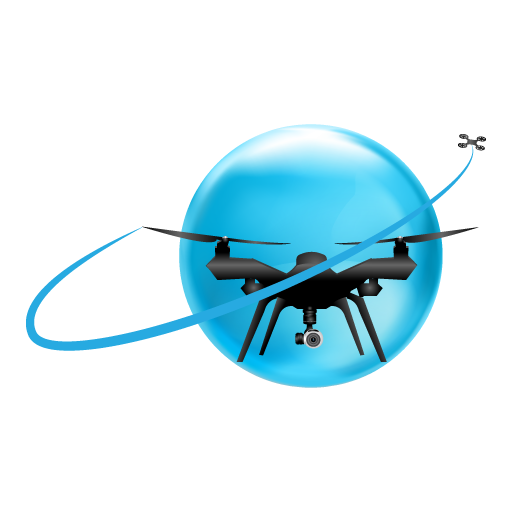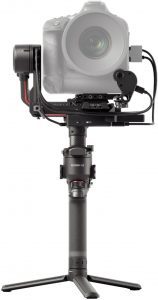Do you think of moving a camera without laying down a ton of equipment? It sounds great. Right? But it makes operating and focuses pulling a lot complicated. However, DJI’s most recent gimbal has advanced features that make such concerns easy. Today in this article, we will review the DJI RS 3 Pro’s advanced features and compare it to the DJI RS 2. So let’s start:
RS 3 Pro Gimbal Stabilizer Combo
DJI RS 3 Pro build quality and design
The RS 3 Pro is very well built. It’s made of aluminum and feels solid and well put together. The gimbal has a nice weight to it and feels well-balanced. The design is also perfect. The gimbal has an excellent ergonomic shape and is easy to hold and operate. The controls are all within easy reach, and the mobile app is well-designed and easy to use. The only downside is that the gimbal is quite large and heavy. It’s not the sort of thing you’d want to carry around all day, and it’s not something you’d like to handhold for any length of time.
LiDAR focussing
One of the headline features of the RS 3 Pro is the addition of a LiDAR sensor, which is used to map the 3D environment and assist with focusing. You can point the camera at something, and the gimbal will automatically focus the lens. It’s a little like an autofocus system in a stills camera, but for video.
In use, it’s… interesting. The idea is that you can point the camera at something, and it’ll focus. In practice, you need to keep the subject within a relatively small box in the center of the frame, and even then, it might not work. It also only works with lenses that communicate electronically with the gimbal. That’s not a problem with a Fuji X-mount lens, but it could be an issue with an Arri/Zeiss Ultra Prime.
It also only works in video mode. In stills mode, the camera will focus using its system. This is probably for the best, as the gimbal’s system is relatively slow to focus and may be unable to keep up with fast-moving subjects.
That said, it is possible to map focus points within the gimbal’s mobile app, so you can at least be sure where the camera will focus when you point it at something. This isn’t quite the same as being able to point and shoot, but it gives you more control.
The other thing to be aware of is that the LiDAR system only works when the gimbal is turned on. If you turn it off, the camera will lose focus. This isn’t a huge problem, as you can turn the gimbal back on, but it’s something to be aware of.
Where to buy the DJI RS 3 Pro for the Best Price
 The DJI RS 3 Pro is available on the Amazon website for $949. No other online store can beat this price.
The DJI RS 3 Pro is available on the Amazon website for $949. No other online store can beat this price.
The DJI RS 3 Pro is an excellent stabilizer for your camera. It has an excellent transmission range and is very easy to use. It is also very affordable, making it an excellent option for those on a budget.
DJI Transmission and mobile control
The gimbal ships with a small, lightweight battery, charger, and single control cable. There’s also a mobile app, which is how most people will interface with the gimbal, as it offers a live view from the camera and complete gimbal control. The mobile app requires a DJI account, which is free, and it’s also possible to link the gimbal to an existing DJI Ronin app if you have one of those devices.
The RS 3 Pro is operated using a combination of physical controls and a touch screen. The physical rules are a focus wheel and a joystick. The focus wheel has a hard stop at infinity, which is excellent, and a button can be assigned to any of the camera’s functions. The joystick is used for panning and tilting the gimbal, and there are also the mode and menu buttons. The mode button cycles through the various operating modes, and the menu button accesses the on-screen menu.
DJI RS3 Pro improvements over the RS2

Following are the improvements that have been made in this generation:
Active Track
The RS 3 Pro is an iterative update to the RS 2. The headline feature is ActiveTrack 3.0, an AI-assisted manual tracking mode. It is most considerable but non-autonomous – you still have to select a target – however, it’ll keep that target in the frame even if it moves behind something, as long as the object isn’t too close or too far away, and as long as there’s enough contrast for the gimbal’s software to be able to lock on.
IMU
The RS 3 Pro also has a new, more capable IMU and a new algorithm for the motor control system. The result is that the gimbal is smoother in tracking objects and responding to manual input.
Building and design
In terms of build quality, the RS 3 Pro feels very solid. The arms are locked together with oversized thumbscrews, the motors have been beefed up, and the whole thing feels like it would take much more of a beating before something broke. This is, after all, a device designed to be used one-handed, which means it might get dropped occasionally.
Battery life
The battery life has been increased from 12 to 18 hours, which is a significant improvement. The gimbal can also be powered via USB-C, so if you’re using it with a camera powered off a USB battery, you can theoretically keep the gimbal going indefinitely.
Something more excited:
Another neat feature of the RS 3 Pro is that it can be used in “follow mode” without a camera attached. This is effectively a mode where the gimbal will follow the operator’s movements, and it’s great for getting smooth shots without worrying about the gimbal’s orientation.
Except for this, there is the “force mobile” mode, which is designed for use with a smartphone app. This mode essentially turns the gimbal into a large, ungainly selfie stick, but it’s still a fun way to get creative with your smartphone camera.
Advance operations:
In terms of operation, the RS 3 Pro is very similar to the RS 2. The main difference is that the motor control has been improved, so the gimbal is smoother and more responsive. The other significant difference is the ActiveTrack 3.0, which works well most of the time, but can be finicky if the contrast isn’t quite right. Overall, the RS 3 Pro is an excellent update to the RS 2, and it’s a great option for anyone looking for a small, lightweight gimbal that can handle a variety of cameras.
Conclusion:
The DJI RS 3 Pro is an excellent update to the RS 2, and it’s a great option for anyone looking for a small, lightweight gimbal that can handle a variety of cameras. The build quality is excellent, and the gimbal is easy to operate. The only downside is that the gimbal is large and heavy, and the LiDAR focusing system is a bit finicky.
Contents


